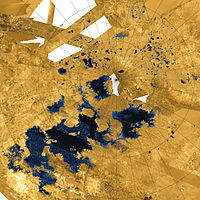
Photo from wikipedia
Understanding and controlling the formation of nanoparticles at the surface of functional oxide supports is critical for tuning activity and stability for catalytic and energy conversion applications. Here we use… Click to show full abstract
Understanding and controlling the formation of nanoparticles at the surface of functional oxide supports is critical for tuning activity and stability for catalytic and energy conversion applications. Here we use a latest generation environmental transmission electron microscope to follow the exsolution of individual nanoparticles at the surface of perovskite oxides, with ultra-high spatial and temporal resolution. Qualitative and quantitative analysis of the data reveals the atomic scale processes that underpin the formation of the socketed, strain-inducing interface that confers exsolved particles their exceptional stability and reactivity. This insight also enabled us to discover that the shape of exsolved particles can be controlled by changing the atmosphere in which exsolution is carried out and additionally, this could also produce intriguing heterostructures consisting of metal-metal oxide coupled nanoparticles. Our results not only provide insight into the in situ formation of nanoparticles, but also demonstrate the tailoring of nanostructures and nano-interfaces.
Journal Title: ACS nano
Year Published: 2019
Link to full text (if available)
Share on Social Media: Sign Up to like & get
recommendations!